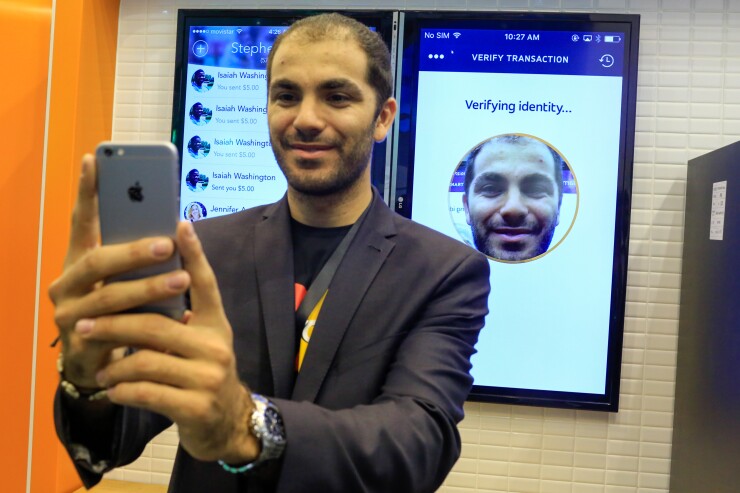When adopting new payment methodologies, banks must strike a balance between ease of use, ease of access and the need to maintain stringent security.
Fingerprint authentication is now in mainstream use and rapidly giving way to the latest facial recognition functionality. We’ve already seen that consumer payment methods using biometric authentication are becoming increasingly mainstream, so it is unlikely to be long before corporate clients are expecting to see the same.
Extending this functionality into corporate cards has the potential to make the commercial payments process more seamless and secure. While challenges remain, mobile wallets that defer to the individual’s personal attributes to make secure payments on these cards, whether authenticated by phone or by “selfie" offer a potential route forward.

Automation, replacing humans with machines to perform repetitive actions, is dramatically increasing the number of financial transactions in an organization. However, while it can track and store many more processes than humans can, and more accurately, right now it can’t provide the next-level service many clients are coming to expect of their financial partners: planning and modeling.
AI is rapidly establishing itself as the missing piece of the puzzle that takes the various data flows created by automated transactions and knits them together to discover patterns. All this is very important to commercial banks because patterns in spending and efficiency can potentially deliver valuable insights clients can use to improve their financial health.
As is the case in many other sectors of the economy, commercial banks are focused on providing better customer experiences, and, by so doing, winning new business and reducing churn rates. Customers’ demands and expectations move as rapidly as the leading-edge technology they are exposed to, so there is growing pressure on the banking industry to provide new, easy-to-use, frictionless digital services fast.
Application programming interfaces provide the technology to exchange customer data with other parties in a simple and secure way, facilitating rapid innovation in products and services. Creating new applications such as voice banking, P-to-P, loan processing and risk management and using APIs as building blocks, is now seen as the best way to keep up with the innovation challenges facing the financial industry.
Fintechs have dominated the API landscape by creating apps that have challenged, and in some cases, surpassed solutions made by the banking industry.
To keep pace, banks need to either invest heavily to develop this technology themselves or partner with fintechs to be more effective and efficient. By working together and taking advantage of APIs, banks and fintech firms can leverage their complementary strengths, enhancing the customer experience much more than either entity could do on its own.
The use of different payment types (whether it is plastic, virtual or via mobile wallet) is partly a response to the consumerization of our financial experience. Corporate clients can’t understand why payments should still be a laborious process of raising invoices and purchase orders, requesting printed checks or bank transfers and creating lengthy payment terms.
Instead, the immediacy of a card, real, virtual or embedded in an app, ties all the above elements together. It gives unsurpassed traceability and is easy to add to financial management software.
Historically, paying by using a card has been seen as a debt generator. Credit cards, after all, incur interest. However, using payment cards as a substitute for invoice terms makes them a useful tool, not only to enhance a company’s working capital positions, but also to improve traceability, security and the level of control that can be placed on business spend.
An expense management system, or EMS, is just one of many tools that can be brought together into a single financial view, helping businesses gain greater control over expenditure.
Unlike written expense policies and separate transactional management software, an EMS embeds expense policies into the technology, allowing real-time reconciliation and approvals to take place.
Up to now, retail banking has been ahead of the game in embracing new technologies and digital disruption, making commercial banking look sluggish by comparison. This is a situation that is changing fast as corporate banks grasp the need to take advantage of the latest technologies to ensure commercial clients are gaining the same kinds of benefits, from workflow efficiencies through to intuitive, mobile-first experiences. It’s a trend that is picking up pace and likely to accelerate further in the years to come.





